Please don’t take this as an endorsement of energy drinks, especially not for adolescents; they don’t need the extra sugar, caffeine, and who-knows-what. However, it does take a little knowledge of how generators and motors work to get the joke in this ad. I think I’ll ask my middle schoolers to explain what’s going on as a short quiz after we talk about electricity and magnetism.
Life on the Hill
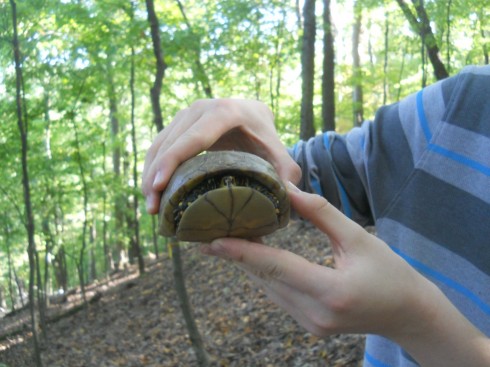
Last week, on one of our daily hiking trips up the slope for P.E., we came across two turtles. It was odd enough to find the first one on the way up the hill since they’re so well camouflaged against the brown leaves littering the floor of the forest.
The students wanted to take it with them, but since we’ve had a turtle in the lab this semester already I told them they should leave it there.
They left it on the ground and we continued on. It was only about 15 meters off the top of the ridge, so they wanted to stop by and see it again on our way back down. I bet them they couldn’t find it again, even though it had only been five minutes and turtles are known to be slow. They still couldn’t find it, but less than a minute later they found the second turtle on a different place.
It was quite a bit of fun looking for turtles in the forest. It occurred to me that it would be nice to have another objective on our hikes. So now, every time we go up the hill, we’re bringing a bunch of sample jars. Since I’ve been thinking about arthropoda lately our first few outings will be to collect insects and spiders on different parts of the slope to see if there’s an ecological difference due to the microclimatic differences.
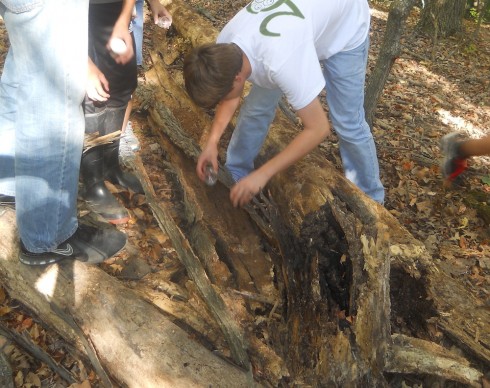
Copper Plating
As an introduction to ionic compounds, my chemistry students hooked up a dime to an electrode in a copper chloride solution. It’s not exactly copper plating, but the color is quite interesting.
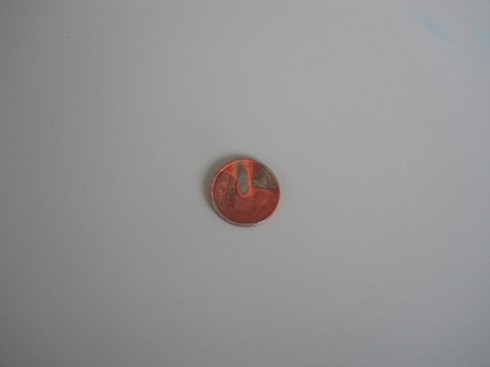
It was also interesting to see how the color of the copper chloride solution changed as well: from a dark to pale blueish green as the copper was extracted by the electrolysis.
The Math of Planting Garlic
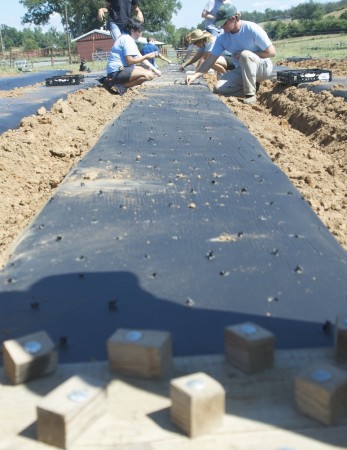
One of the jobs my class helped with at the Heifer Ranch was planting garlic in the Heifer CSA garden. The gardeners had laid rows and rows of this black plastic mulch to keep down the weeds, protect the soil, and help keep the ground warm over the winter.
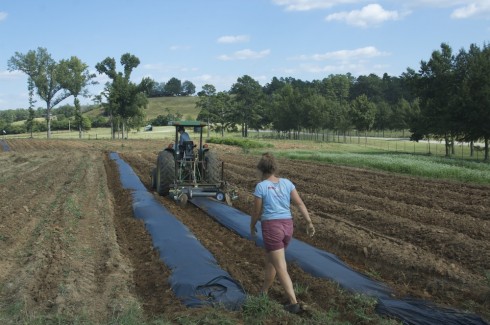
We then used an improvised puncher to put holes in the plastic through which we could plant cloves of garlic pointy side up. The puncher was a simple flat piece of plywood, about one foot by three feet in dimensions, with a set of bolts drilled through. The bolts extended a few inches below the board and would be pressed through the black plastic. Two handles on each side of the board made it easier for two people to maneuver and punch row after row of holes.

As I took my turn punching holes, we did the math to figure out just how much garlic we were planting. A quick count of the last imprint of the puncher showed about 15 holes per punch. Each row was about 200 feet long, which made for approximately 3,000 heads of garlic per row.
We managed to plant one and a half rows. That meant about 4,500 garlic cloves. With ten people planting, that meant each person planted about 450 cloves. Not bad for an afternoon’s work.
Arkansan Spiders
The Heifer Ranch is home to quite the variety of large spiders, including the tarantulas we found a couple years ago. Most of them work hard at keeping the insect pests down. Here’s a collection of some of them we ran into this year.

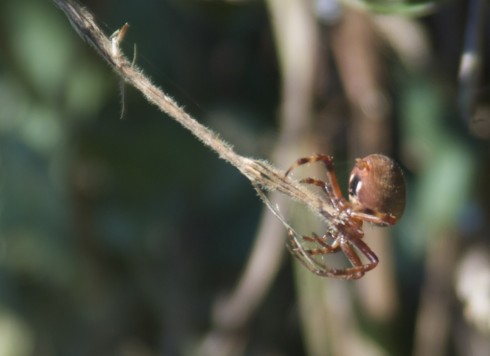


Bobcat?

Ms. Mertz believes she found some feline tracks in the soft sediment next to the puddles in the creek that may belong to a bobcat. Or maybe a large housecat. Unlike canine tracks — like dogs and coyotes — felines don’t leave claw marks in their tracks.
The Michigan DNR has a nice comparison of bobcat to other tracks, while the Missouri Dept. of Conservation has a nice reference of common animal tracks for the state.
Rotifers
Two students working on their campus ecology project were using the compound microscope to look at microbes associated with the leaf matter from the creek, and they found these two rotifers.
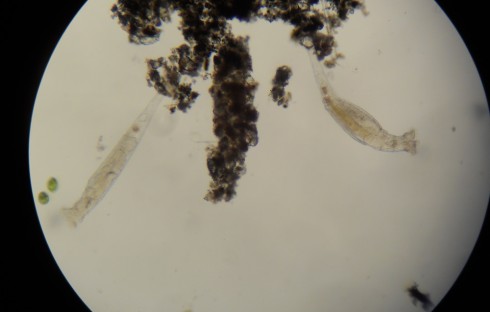
The one on the left was trying to suck in the two green protists, which generated a current that sent the protists into a circular loop.
Searching for Life in a Drying Creek
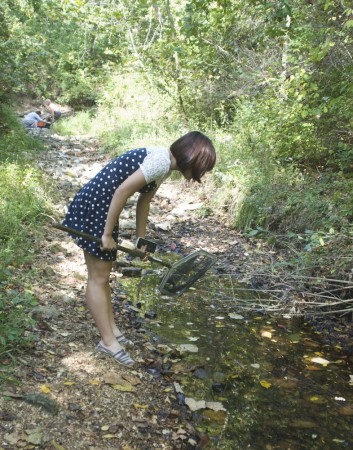
The puddles along the creek’s bed are getting smaller and smaller. Last week, Ms. Mertz’s class was out doing their ecological survey of the creek life lead by Ms. Currier. They still found lots of arthropods, frogs and some fish concentrated around the remaining puddles.